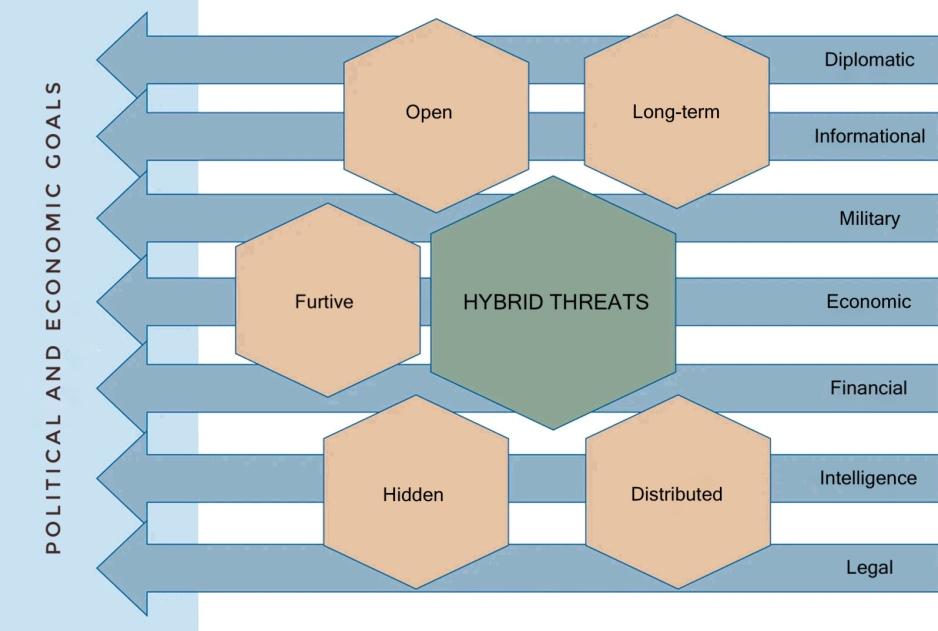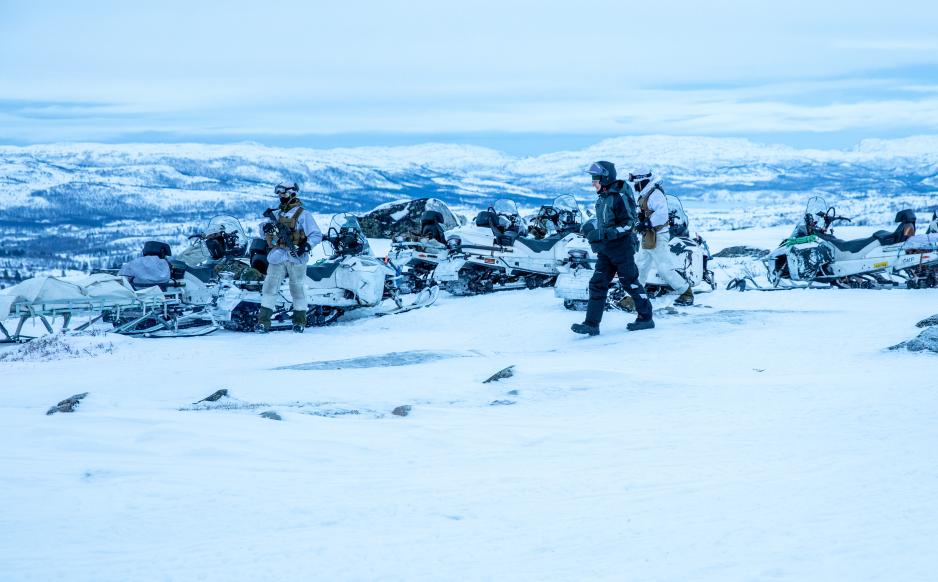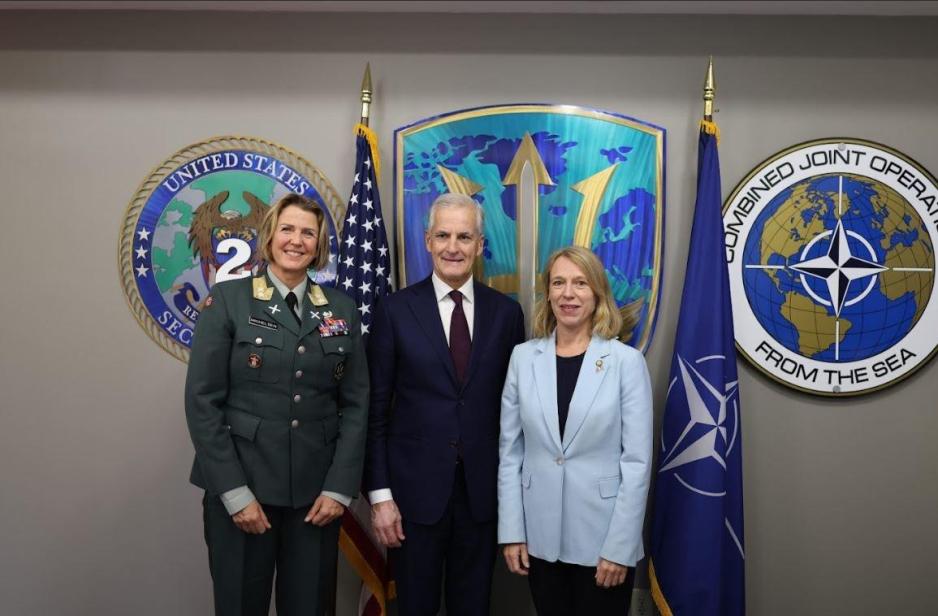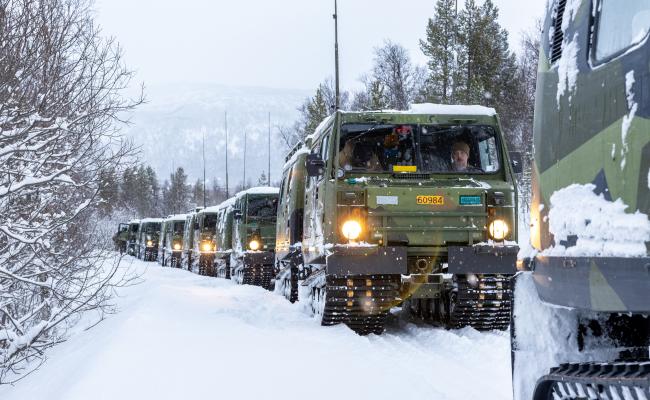Arctic Military Leaders Met Near the Norway-Russia Border: Discussed Hybrid Threats

Visit to the Storskog border crossing point on the Norwegian-Russian border, 20 km southeast of Kirkenes, last Wednesday: Flag officers from the seven Western Arctic countries and the observer states France, the UK, Germany, and the Netherlands in the Arctic Security Forces Roundtable format. The group also included representatives from the commands USEUCOM, USNORTHCOM, NORAD, and NATO JFC Norfolk. (Photo: the Norwegian Armed Forces)
Last week, the Arctic Security Forces Roundtable was held in Kirkenes, Northern Norway, focusing on grey zone threats. "It is important to create understanding among our close allies about how the security situation in the Arctic is perceived in a turbulent and uncertain time," says the Norwegian Armed Forces.
This year's physical edition of the Arctic Security Forces Roundtable (ASFR) took place in the border town of Kirkenes in Sør-Varanger, Finnmark county. This is the northernmost and easternmost part of mainland Norway.
The forum gathers military leaders from the seven Western Arctic countries – Norway, the US, Canada, Finland, Sweden, Denmark, and Iceland – as well as from the observer states of France, the UK, Germany, and the Netherlands.
This time, the participants also included representatives from the North American Aerospace Defense Command (NORAD), the US Northern Command (USNORTHCOM), and the relatively new NATO Joint Force Command Norfolk in Virginia, USA.
Norway and the US established the ASFR format in 2010 to promote regional understanding and strengthen multilateral security cooperation in the Arctic region.
Eye on the hybrid threat situation
The topic for the roundtable in Kirkenes was the countering of hybrid threats in an Arctic environment.
This type of threats, also known as grey zone threats, can be defined as a set of coordinated, unwanted actions from foreign states or non-state actors below the threshold of direct armed conflict.
In more detail, the participants discussed opportunities and challenges for cooperating in the face of such a complex threat situation.
"It is important to create understanding among our close allies about how the security situation in the Arctic is perceived in a turbulent and uncertain time," states the Norwegian Armed Forces.

Hybrid threats involve the use of a wide range of means and challenges across sectors, levels and areas of responsibility. (Source: The Norwegian Total Preparedness Commission's report, NOU 2023:17, figure 7.1, editorial translation)
Examples of hybrid threats include influence operations and disinformation, cyber attacks, state-controlled migration, the acquisition of tech businesses and critical infrastructure, intelligence, and sabotage.
Also read (the article continues below)
Challenging security policy context
As known, contemporary uncertainty is not just related to Russia, its warfare in Ukraine, and other great power projects.
The work of developing a joint allied situational awareness and frame of reference for cooperation in the Arctic in the time coming has, to put it mildly, gained new and demanding dimensions in the wake of the Trump administration's reorientation of US policy.
A central aspect is Trump's radical ideas about the US annexing Arctic allies such as Canada and Greenland, a part of the Kingdom of Denmark.
At the military level, Arctic allied relations seem to be holding up well so far, while political turmoil is picking up more steam.
On Thursday, Canada's Prime Minister Mark Carney announced that the era of close Canadian-American cooperation on security and defense is over, NTB reported.
Emphasized the importance of stability
"The intention with the meeting [in Kirkenes, ed.note] is to promote Arctic security cooperation between the nations operating in and around the region, and to promote peaceful development of the Arctic region and a rules-based international order," writes the Norwegian Armed Forces.

Army Brigadier Thor Andreas Kårsten, the Norwegian Defence Staff’s Chief of Operations and ASFR’s co-chair. (Photo: Thomas Haraldsen / the Norwegian Armed Forces)
Both politically and militarily, Norway appears to emphasize the reminder that rules-based allied cooperation in the North is in the US core interests.
“Military security and NATO’s presence in the Arctic are crucial for maintaining stability in the face of the increasing geopolitical tensions and global interests in the region,” says Army Brigadier Thor Andreas Kårsten, the Norwegian Defense Staff’s Chief of Operations and ASFR’s co-chair.
“Hosting the forum in Kirkenes this year provides a special setting for the discussions and underlines the importance of continuous collaboration among the Arctic members," he continues.
Kårsten chaired the meeting in Kirkenes with colleagues in the J5 section at the US European Command.
More about the military forum
· The Arctic Security Forces Roundtable is led on a general basis by the Norwegian Defense Staff and the US European Command.
· The Western Arctic countries take turns hosting the annual physical meetings, while hosting the yearly virtual meetings rotates between the four observer states.
· Overview of the biannual conferences in recent years: 2024: Kiruna, Northern Sweden and the Netherlands. 2023: Turku, Southwest Finland, and the UK. 2022: Fairbanks in Alaska, USA, and France.
· Russia has not participated in the forum since it annexed Crimea in 2014 and NATO in response suspended military cooperation with the Russian side.
Input from various actors
"All discussions and briefs have been linked to experiences with this year's topic, grey zone threats," says Lt. Colonel Stine Barclay Gaasland, Deputy Director of Strategic Communication in the Norwegian Defense Staff, to High North News.
She states that the participants received briefings from the following actors:
- The Border Commissioner for the Norwegian-Russian Border
- The Deputy Chief of Police in Finnmark Police District
- The Norwegian Police Security Service (PST) in Finnmark
- The Norwegian Armed Forces in Finnmark by the Battalion Commander of the Garrison in Sør-Varanger and the Company Commander of the Jarfjord Border Station
- The Finnish Border Guard
- The Editor of the newspaper Barents Observer

The 198 km long Norwegian-Russian border is patrolled and monitored by soldiers at the Garrison in Sør-Varanger, also known as the border guard. The border guards carry out both a military mission consisting of asserting sovereignty and police tasks in the form of border surveillance. Thus, they act partly on behalf of the border commissioner and the Finnmark chief of police. (Photo: Arnfinn Sjøenden/the Norwegian Armed Forces)
Important first-hand knowledge
"I think it is very good that there is focus on Northern Norway and hybrid threats," comments Ellen Kahtrine Hætta, the Chief of Police in Finnmark Police District, to HNN.
For several years, Hætta has illuminated the need for better total preparedness in the face of hybrid interference in the North, including as a member of the Norway's Total Preparedness Commission.
"We are experiencing that many are now seeking first-hand knowledge and coming here to Kirkenes and Finnmark. They want a good situational awareness, which is very important and positive," she states.
Recently, Hætta and the Chief of the Finnmark Land Defense, Colonel Jørn Qviller, advocated for strengthening the Norwegian civil society's operative ability in the increasingly uncertain security situation:
"We need a strong defense, but also a strong civil society that can withstand hybrid interference or attacks aiming to destabilize, influence, or impact us in our everyday lives," they wrote in a joint op-ed in Nordnorsk debatt.

Ellen Katrine Hætta, long-time police Chief of Police in Finnmark. (Photo: Jonas Karlsbakk / the Barents Secretariat).
Unpacking the language
The Norwegian Major General Elisabeth Michelsen, Deputy Chief of Staff for Operations at JFC Norfolk in the US, was among the participants at the meeting in Kirkenes.
Last week, Michelsen wrote about the roundtable topic on her LinkedIn profile:
"Nationally, we have traditionally been careful about security in our language. Often, the message is wrapped in a bit technical, almost abstract terms such as "grey zone issues," "hybrid threats," or "activities below the threshold of armed conflict." What is actually behind these terms?"
"If you reduce them to their core, a lot (not everything) concerns one thing: Russian destabilization operations. These are not random but part of a calculated and targeted strategy to undermine and break down cohesion and stability in both Norway and the West," the major general points out and continues:
"They attack us where we're weak and vulnerable and use both military and non-military measures. They impact us in the cognitive domain and conduct covert sabotage operations either against physical 'objects' or digitally. It's not war, but it's not peace either."

Major General Elisabeth Michelsen was appointed Deputy Chief of Staff, Operations at JFC Norfolk in 2024. Here she is with Norway's Prime Minister Jonas Gahr Støre and Ambassador to the United States Anniken Huitfeldt during their visit to Norfolk this fall. (Photo: NATO JFC Norfolk)
A look at the US commitment to NATO
In the aforementioned post, Michelsen also comments on questions regarding the US membership of and commitment to NATO, particularly in light of the Trump administration's statements:
"Today, we could read in VG that Norway's Ambassador to the US, Anniken Huitfeldt, says that no one is saying that the NATO membership is in danger. Seen from the inside of NATO in the US, my experience is that a lot is "business as usual," and some media stories are relatively quickly illuminated by facts on the inside," she writes and continues:
"Visits to the Joint Force Command Norfolk are still frequent, and recently from, among others, the entire NATO Military Committee. Construction is taking place at the Norfolk garrison to have office space for all newcomers this year. Our focus is that the task we're solving is important for the entirety of NATO both in Europe and North America."
JFC Norfolk is one of three operational headquarters in NATO. Norway, along with Iceland and the UK, is in JFC's area of responsibility. As the headquarters become fully operational, likely in 2025, Finland, Sweden, and Denmark will probably join them.





